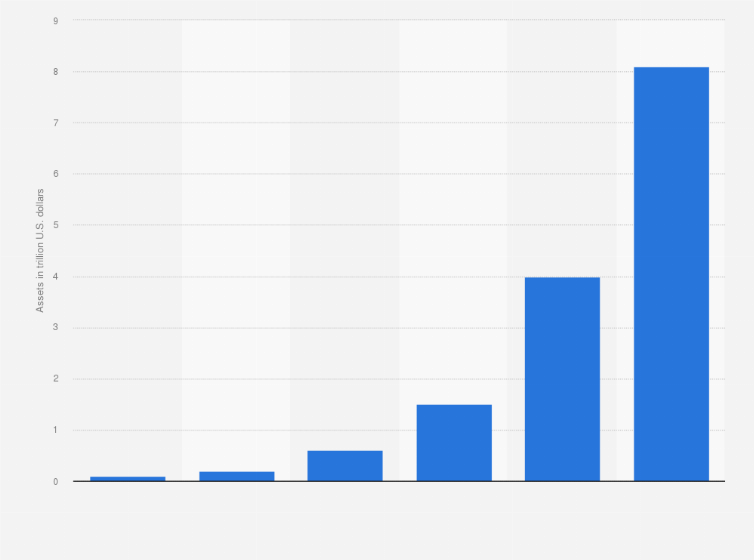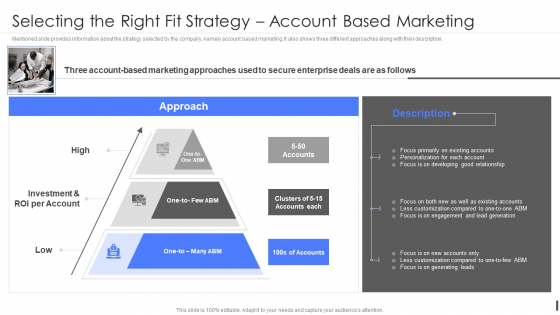robo-advisors and do-it-yourself (DIY) trading. Each approach offers distinct advantages and caters to different investor profiles. This article explores the key differences between robo-advisors and DIY trading, helping you determine which one aligns with your investment goals and preferences.
Navigating the world of investment involves a spectrum of approaches, each tailored to specific investor profiles, objectives, and preferences. Robo-advisors and do-it-yourself (DIY) trading represent two contrasting ends of this spectrum. Understanding their key differences is pivotal in making an informed decision that aligns with your unique investment goals. Let’s delve deeper into these approaches:
Robo-Advisors:
Automated Portfolio Management: Robo-advisors are automated investment platforms that use algorithms to build and manage portfolios based on your risk tolerance, financial goals, and time horizon. They eliminate the need for active decision-making.
Diversification: Robo-advisors typically emphasize diversification by spreading investments across a broad range of asset classes, reducing risk exposure to individual securities.
Low Cost: Robo-advisors often have lower fees compared to traditional human advisors. This cost-efficiency is achieved through automation and passive investment strategies, such as index funds or ETFs.
Ease of Use: Robo-advisors are user-friendly and require minimal financial expertise. They are an excellent choice for beginners who want a hands-off approach to investing.
Risk Management: Automated rebalancing ensures that your portfolio aligns with your chosen risk profile. Robo-advisors continuously adjust your investments to maintain the desired asset allocation.
Time-Saving: Robo-advisors save you time by handling portfolio management tasks, research, and decision-making on your behalf.
DIY Trading:
Full Control: DIY trading provides complete control over your investment decisions. You choose the assets, execute trades, and manage your portfolio actively.
Customization: DIY trading allows for highly customized portfolios. You can invest in specific stocks, bonds, or other assets that align with your preferences and beliefs.
Learning Opportunity: Engaging in DIY trading offers a valuable learning experience. It encourages individuals to research, analyze, and make investment decisions independently.
Potential for Higher Returns: While DIY trading can be riskier due to the potential for higher exposure to individual securities, it also offers the opportunity for greater returns if you make well-informed choices.
Cost Variability: DIY trading costs can vary widely, depending on the brokerage platform, the frequency of trading, and the assets chosen. It’s essential to be mindful of trading fees and commissions.
Active Management: DIY traders must actively monitor their portfolios, adapt to market changes, and execute trades. This approach demands time, effort, and a deep understanding of market dynamics.
Determining the Right Approach:
Risk Tolerance: Consider your risk tolerance. Robo-advisors are generally better suited for risk-averse investors, while DIY trading is for those comfortable with higher risk and the potential for greater rewards.
Time Commitment: Assess the time you can dedicate to investment management. If you have limited time, a robo-advisor may be more practical. DIY trading requires ongoing attention and research.
Financial Expertise: Evaluate your level of financial expertise. Robo-advisors are user-friendly and suitable for beginners, while DIY trading demands a deeper understanding of the markets.
Investment Goals: Your investment goals play a crucial role. Robo-advisors are often recommended for long-term goals like retirement, while DIY trading can be more adaptable for various objectives.
Cost Considerations: Take into account your budget and the fees associated with each approach. Robo-advisors typically have transparent, low fees, while DIY trading costs can vary widely.
Ultimately, the choice between robo-advisors and DIY trading depends on your individual circumstances, objectives, and comfort level. Some investors even choose a hybrid approach, combining elements of both to strike a balance between automation and active management. Regardless of your choice, thorough research and continuous education should be a fundamental part of your investment journey.
To delve further into this matter, we encourage you to check out the additional resources provided here: What the Next Decade Holds for Financial Advisors

Robo-advisors are digital platforms that use algorithms and automation to manage your investments. They offer a hands-off, automated approach to portfolio management. Here’s why robo-advisors might be the right choice for you:
Robo-advisors represent a modern approach to investment management, leveraging technology to streamline and automate the investment process. Here’s a more in-depth exploration of why robo-advisors could be the ideal choice for your investment needs:
Cost-Effective Investing: Robo-advisors often come with lower fees compared to traditional human financial advisors. By automating many aspects of portfolio management, they can pass on cost savings to investors. This makes them an attractive option for cost-conscious individuals seeking to maximize their returns.
Accessibility: Robo-advisors have lowered the barriers to entry for investing. You don’t need a substantial initial investment to get started. Many platforms allow investors to begin with small amounts, making it accessible for those who might have limited capital to invest.
Diversification: One of the core principles of investing is diversification, which helps spread risk across different asset classes. Robo-advisors excel in this regard, as they can construct well-diversified portfolios by allocating your funds across various asset classes, including stocks, bonds, and other investments.
Risk Assessment: Robo-advisors typically begin by assessing your risk tolerance and financial goals through a series of questions. Based on your responses, they create a portfolio that aligns with your risk profile. This personalized approach helps ensure that your investments match your individual comfort level.
Automatic Rebalancing: Maintaining a balanced portfolio is critical for long-term investment success. Robo-advisors monitor your portfolio’s performance and automatically rebalance it when necessary. This ensures that your asset allocation remains in line with your goals, even as market conditions change.
Data-Driven Decisions: Robo-advisors rely on data and algorithms to make investment decisions. This data-driven approach removes emotional bias from investment choices, as it’s not influenced by fear, greed, or market sentiment. It’s grounded in a systematic and disciplined strategy.
24/7 Availability: Robo-advisors operate around the clock, providing access to your investments at any time. You can check your portfolio’s performance, make changes, or monitor your progress at your convenience, without being constrained by traditional business hours.
Transparency: Robo-advisors offer transparency in their investment strategies and fee structures. Investors can easily see how their funds are allocated, track their performance, and understand the costs associated with their investments. This transparency builds trust and confidence.
Educational Resources: Many robo-advisor platforms offer educational resources to help investors understand the principles of investing, risk management, and financial planning. These resources empower users to make informed decisions about their financial future.
Tax Efficiency: Some robo-advisors employ tax-efficient strategies to minimize tax liabilities. This can be particularly beneficial for taxable investment accounts, as it helps investors retain more of their returns.
Simplicity and Convenience: Robo-advisors are designed to be user-friendly and straightforward. You can set up an account quickly, and the platform takes care of the rest. This simplicity and convenience make investing more accessible for individuals with busy lifestyles.
Customization: While robo-advisors provide automated solutions, many also allow for customization. You can specify certain preferences or exclude specific assets if you have ethical or personal considerations.
In conclusion, robo-advisors offer a modern and efficient approach to investing that aligns with the needs and preferences of many investors. Whether you’re new to investing or seeking a cost-effective and hands-off solution, robo-advisors can provide a valuable and effective way to build and manage your investment portfolio. However, it’s essential to carefully evaluate different robo-advisor platforms to find one that aligns with your financial goals and risk tolerance.
Looking for more insights? You’ll find them right here in our extended coverage: What Is a Robo-Advisor?

DIY trading, on the other hand, involves actively managing your own investments. It’s a hands-on approach that offers a high degree of control and flexibility. Here’s why DIY trading might be your preferred choice:
DIY trading, on the other hand, offers a departure from the automated and algorithm-driven world of robo-advisors. It’s a hands-on approach that appeals to a diverse range of investors for several compelling reasons:
1. Active Decision-Making: DIY trading empowers you to actively make investment decisions. You become the captain of your financial ship, allowing you to adapt to evolving market conditions and seize opportunities as you see fit. This active involvement can be particularly appealing if you have a strong belief in specific assets, industries, or trading strategies.
2. Flexibility and Customization: When you choose DIY trading, you’re in control of every aspect of your portfolio. This level of control translates into the ability to customize your investments precisely to your liking. Whether you’re interested in growth stocks, dividend-paying equities, or niche sectors, DIY trading provides the flexibility to create a portfolio that aligns with your preferences.
3. Learning and Skill Development: Engaging in DIY trading offers an ongoing learning experience. You have the opportunity to expand your financial knowledge, hone your analytical skills, and develop a deeper understanding of market dynamics. This learning journey can be intellectually stimulating and personally rewarding, making DIY trading a fulfilling pursuit for those interested in finance.
4. Adapting to Market Trends: DIY traders can promptly respond to emerging market trends, news, or geopolitical developments. This adaptability enables you to make real-time adjustments to your portfolio, capitalize on short-term trading opportunities, and minimize potential losses during market downturns.
5. Investment Goals Alignment: With DIY trading, you have complete control over aligning your investment strategies with your specific goals. Whether you’re saving for retirement, funding education, or pursuing long-term wealth accumulation, you can fine-tune your portfolio to serve your objectives precisely.
6. Asset Selection: The ability to handpick individual assets allows you to incorporate your convictions, preferences, and beliefs into your investment strategy. You can invest in companies or industries that resonate with your values or explore innovative technologies, all while actively managing risk.
7. Risk Management: DIY traders have a granular level of control over risk management. You can set stop-loss orders, diversify across asset classes, and adjust your portfolio’s risk exposure according to your risk tolerance and market conditions.
8. Potential Cost Savings: DIY trading can be cost-effective, especially if you choose low-cost brokerage platforms and minimize transaction expenses. This cost-efficiency can have a positive impact on your long-term returns.
9. Psychological Fulfillment: For some, the psychological fulfillment derived from managing their own investments is invaluable. The sense of ownership and achievement that comes with crafting a successful portfolio can be deeply satisfying.
In summary, DIY trading isn’t just about actively managing investments; it’s about embracing the full spectrum of control, customization, and learning that comes with it. While it requires dedication, research, and ongoing effort, the rewards can extend far beyond financial gains, providing a sense of empowerment and achievement that resonates with many passionate investors. Whether you’re a seasoned trader or just beginning your journey, DIY trading offers a dynamic and engaging path to navigate the financial markets.
You can also read more about this here: How To Adjust and Renew Your Portfolio

Choosing between robo-advisors and DIY trading ultimately depends on your financial goals, risk tolerance, time commitment, and expertise. Here’s how to determine the right fit:
Determining whether to opt for robo-advisors or engage in DIY trading hinges on various factors unique to your financial situation and objectives. To help you make an informed decision, consider the following guidelines:
Financial Goals: Start by clarifying your financial goals. Are you aiming for long-term wealth accumulation, retirement planning, or short-term gains? Robo-advisors are well-suited for long-term goals, as they typically employ diversified, passive investment strategies. DIY trading may be more appealing if you seek active management for shorter-term objectives, such as capitalizing on market fluctuations.
Risk Tolerance: Assess your risk tolerance honestly. Robo-advisors often provide risk assessment questionnaires to determine your risk profile. If you prefer a hands-off approach with lower risk, a robo-advisor can create a diversified portfolio aligned with your risk tolerance. Conversely, if you’re comfortable with higher risk and have the time to manage it, DIY trading allows for more control over risk management.
Time Commitment: Consider how much time you can commit to managing your investments. Robo-advisors are designed for those who have limited time or expertise to oversee their portfolios actively. They handle portfolio rebalancing, tax optimization, and other administrative tasks, freeing you from day-to-day management. DIY trading demands more time for research, analysis, and executing trades.
Expertise: Evaluate your level of investment expertise. Robo-advisors are ideal for individuals with little or no investment knowledge, as they rely on algorithms to make investment decisions. DIY trading requires a solid understanding of financial markets, analysis techniques, and trading strategies. If you lack expertise, a robo-advisor can serve as a learning tool while still managing your investments.
Cost Considerations: Compare the costs associated with each approach. Robo-advisors typically charge management fees, which can vary among providers. DIY trading may involve brokerage commissions, trading fees, and potential tax implications. Assess these costs relative to your investment capital and expected returns to make an informed choice.
Tax Efficiency: Tax efficiency can impact your overall returns. Robo-advisors often incorporate tax-loss harvesting strategies to minimize tax liabilities. If tax efficiency is a priority, consider whether you have the knowledge and tools to manage taxes effectively in a DIY trading scenario.
Flexibility: Examine how flexible you want your investment approach to be. Robo-advisors follow a predefined investment strategy based on your risk profile. DIY trading provides more flexibility to adapt to changing market conditions or to explore unique investment opportunities.
Hybrid Solutions: Don’t overlook the possibility of hybrid solutions. Some platforms offer a combination of robo-advisory services and DIY trading. This can provide a balance between automated portfolio management and hands-on trading, allowing you to customize your approach to your preferences and goals.
Market Conditions: Consider the current market environment. Certain market conditions may favor one approach over the other. For instance, DIY trading may be more attractive during periods of high market volatility, while robo-advisors can provide stability during turbulent times.
Periodic Review: Lastly, commit to periodic reviews of your chosen approach. Your financial situation, goals, and risk tolerance may change over time. Regularly assessing whether robo-advisors or DIY trading align better with your evolving needs ensures your investment strategy remains effective.
In conclusion, the decision between robo-advisors and DIY trading is a personalized one, contingent on your financial objectives, risk profile, expertise, and lifestyle. By thoughtfully evaluating these factors and staying attuned to your evolving financial circumstances, you can make an informed choice that aligns with your long-term financial success.
Explore this link for a more extensive examination of the topic: What Does a Financial Advisor Do?

In conclusion, the decision between robo-advisors and DIY trading boils down to your individual circumstances and preferences. Both approaches have their merits, and the key is to align your investment strategy with your financial goals and the level of control you desire. Whether you opt for automated ease or hands-on involvement, the key to success lies in a well-considered and disciplined approach to investing.
Indeed, the choice between robo-advisors and DIY trading hinges on several factors that are unique to your financial situation and personal preferences. Expanding on this idea:
Risk Tolerance and Expertise: Consider your risk tolerance and expertise. If you are risk-averse and lack experience, robo-advisors can provide a more conservative and guided approach. On the other hand, experienced investors comfortable with risk might prefer the hands-on control of DIY trading.
Time Commitment: Evaluate the time you can dedicate to managing your investments. Robo-advisors are an excellent choice for those with busy schedules who prefer a set-it-and-forget-it approach. DIY trading demands regular monitoring and research.
Financial Goals: Your financial goals play a significant role. Long-term goals like retirement planning may align well with robo-advisors, which can create diversified portfolios with a focus on steady growth. Short-term goals or active trading strategies may favor the DIY approach.
Emotional Resilience: Reflect on your emotional resilience during market fluctuations. DIY trading exposes you to the full spectrum of market emotions. Robo-advisors, driven by algorithms, can provide a more emotion-free investing experience.
Diversification: Diversification is a cornerstone of risk management. Robo-advisors excel in building diversified portfolios, spreading risk across various assets. DIY traders must actively manage diversification, which can be complex and time-consuming.
Cost Considerations: Compare the costs associated with both approaches. Robo-advisors often charge management fees, while DIY trading may involve commissions and other expenses. Assess these costs in relation to your investment capital.
Tax Efficiency: Be mindful of tax implications. Robo-advisors typically manage taxes efficiently through strategies like tax-loss harvesting. DIY traders must be well-versed in tax management to optimize their returns.
Learning Curve: DIY trading comes with a steep learning curve. You’ll need to understand market analysis, trading strategies, and risk management. Robo-advisors are designed for simplicity and are accessible even to those with limited financial knowledge.
Hybrid Approach: Consider a hybrid approach that combines elements of both. You can use a robo-advisor for long-term investments and retain a DIY trading account for active strategies or to experiment with specific assets.
Review and Adjust: Regardless of your choice, regular review and adjustment of your investment strategy are essential. Assess your portfolio’s performance against your financial goals and be prepared to make necessary changes.
Discipline: Discipline is crucial in both approaches. Stick to your chosen strategy, avoid emotional decisions, and stay committed to your long-term objectives.
In summary, the decision between robo-advisors and DIY trading is a deeply personal one. It should align with your risk tolerance, time availability, financial goals, and the level of control you desire over your investments. Remember that there’s no one-size-fits-all answer, and your approach can evolve over time as your financial circumstances change. Whether you opt for the convenience of automated management or the hands-on involvement of DIY trading, the key to successful investing lies in thoughtful planning and disciplined execution of your chosen strategy.
Additionally, you can find further information on this topic by visiting this page: What Is A Robo-Advisor? Definition and How It Works – NerdWallet

More links
You can also read more about this here: The 5 best robo-advisors when you want to be hands off with your …
